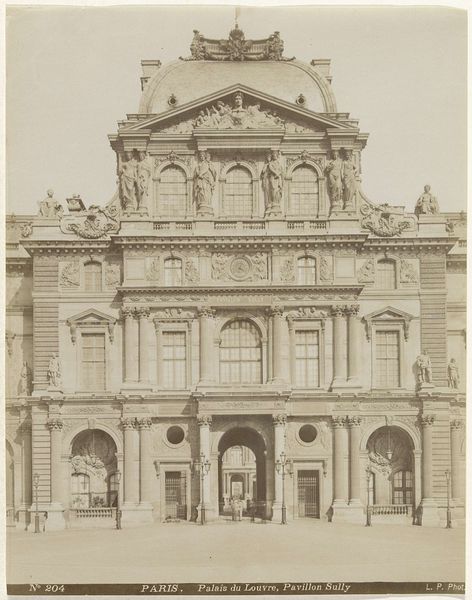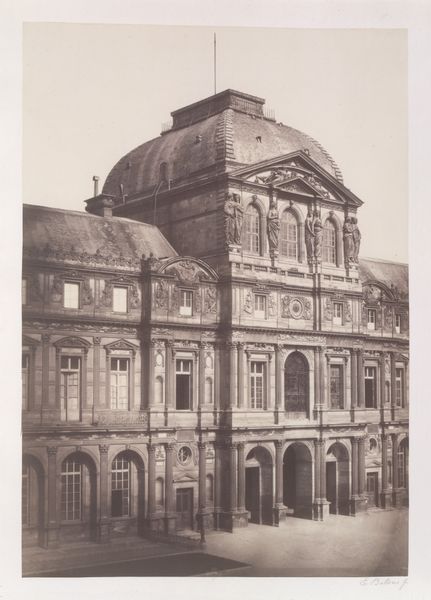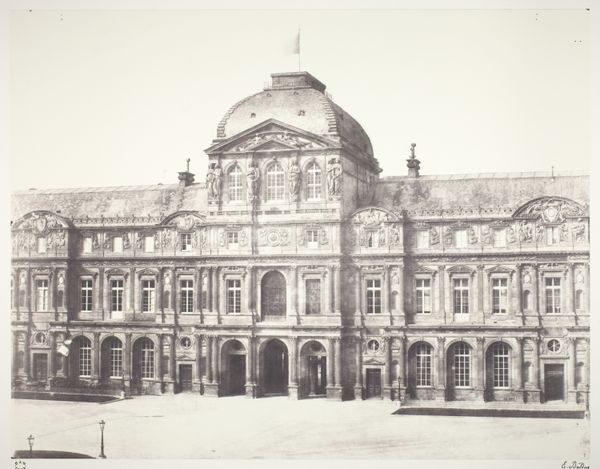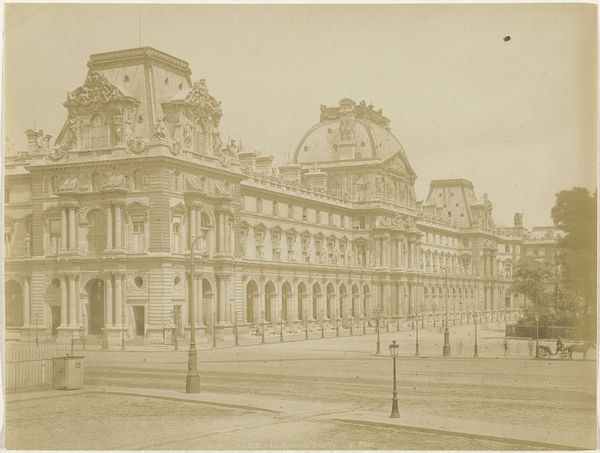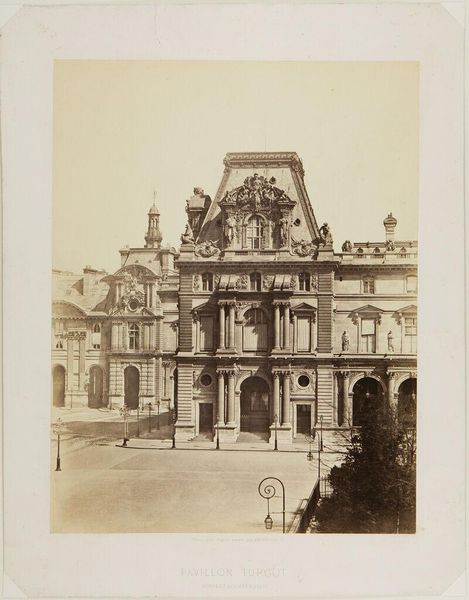
print, photography, albumen-print, architecture
#
neoclacissism
# print
#
archive photography
#
photography
#
historical photography
#
cityscape
#
albumen-print
#
architecture
Dimensions: height 275 mm, width 204 mm, height 434 mm, width 333 mm
Copyright: Rijks Museum: Open Domain
Editor: So, here we have Edouard Baldus's "Paviljoen van het Louvre, Parijs" from around 1855-1857. It’s an albumen print. The detail is just incredible! It’s hard to believe it's a photograph from that era. What strikes you about this piece? Curator: I see a powerful statement about the relationship between architecture, photography, and the construction of national identity in mid-19th century France. Consider that this photograph was created during a period of massive urban restructuring in Paris under Napoleon III and Haussmann. Baldus's work wasn't just documentation; it actively participated in forging a visual narrative of progress and imperial power. Editor: That's fascinating. How does it relate to our understanding of race and gender during that period? Curator: Look closely at the neoclassical architectural style: its emphasis on symmetry, order, and idealized forms. These were visual metaphors for a certain concept of civilization, one that often implicitly excluded those deemed "uncivilized"— namely, colonized populations and marginalized groups within France itself. Consider how these grand architectural projects reinforced social hierarchies. The Louvre, as a symbol of national pride and cultural heritage, subtly promoted specific values, implicitly endorsing the dominant, white, male gaze. Baldus's precise and seemingly objective documentation helped solidify this perception of Paris as a modern, progressive center, effectively obscuring the experiences of those whose labor and lives were displaced and devalued by this very progress. Does that prompt any further thoughts for you? Editor: It makes me think about who was controlling the narrative, and how photography played a part in shaping those perceptions. Curator: Exactly! And remember, this photographic project, while seemingly neutral, served very specific political purposes. By examining its context, we start to question whose stories were being told and whose were being silenced. Editor: I'll never look at historical photographs the same way again. Curator: Nor should you! It’s crucial to always consider the power dynamics at play and the unacknowledged voices in these seemingly objective historical documents.
Comments
No comments
Be the first to comment and join the conversation on the ultimate creative platform.

